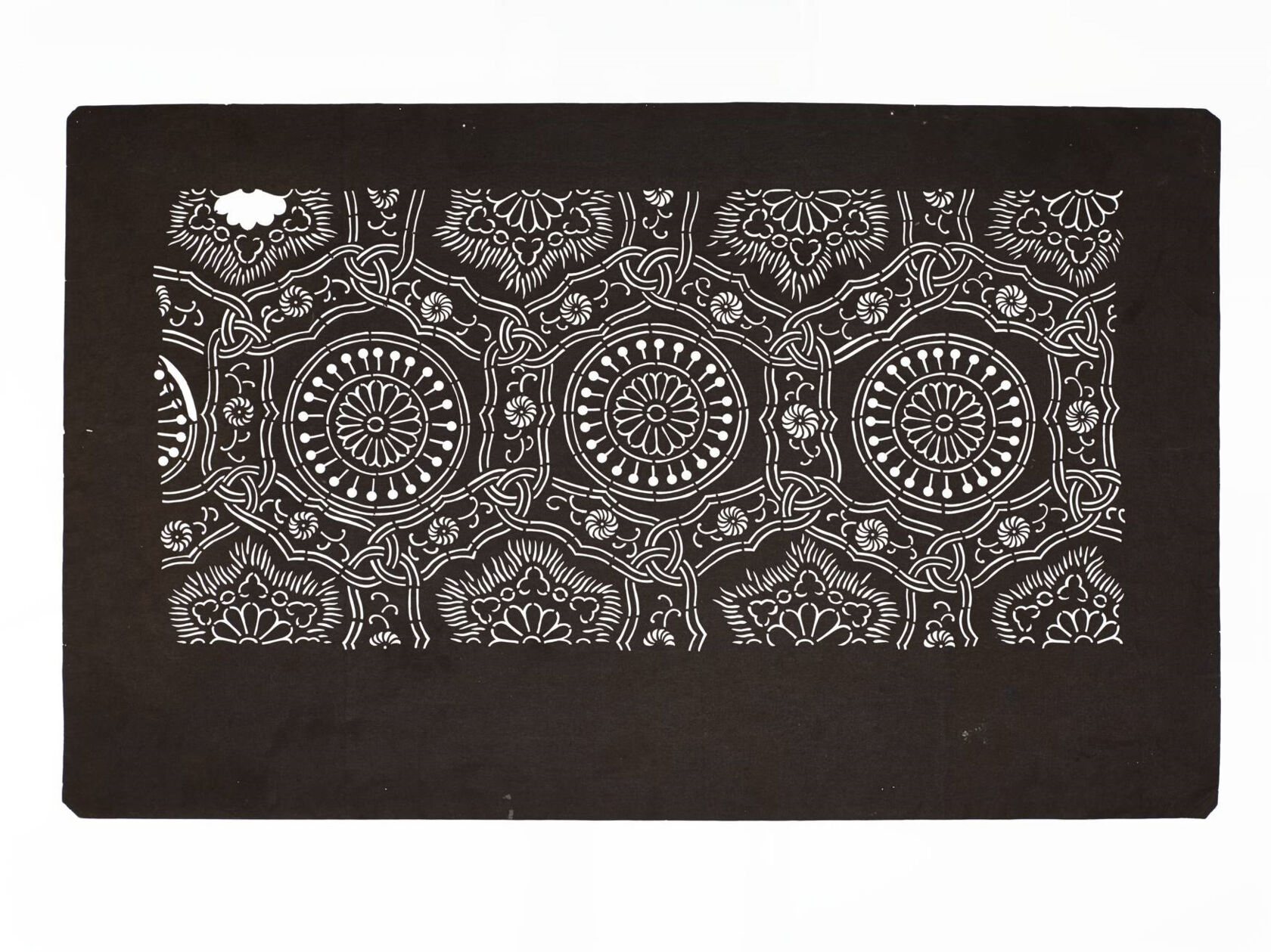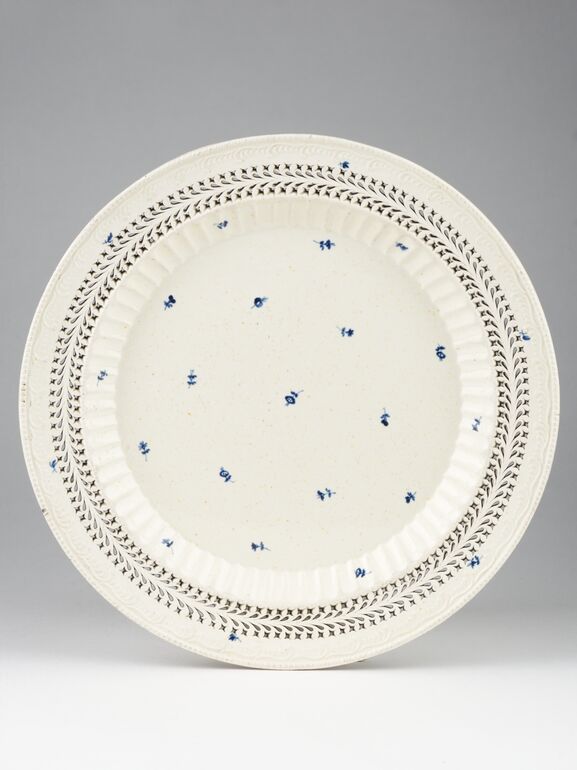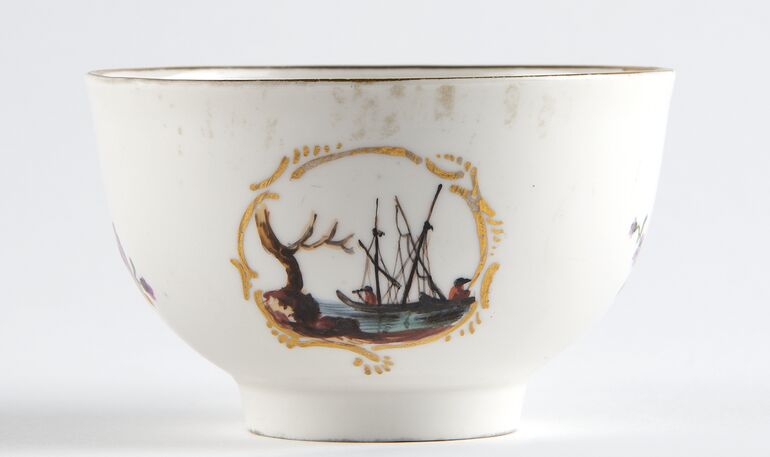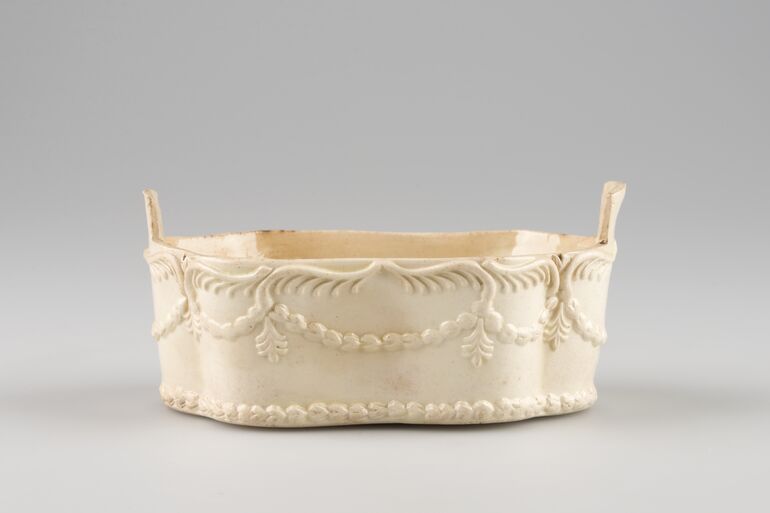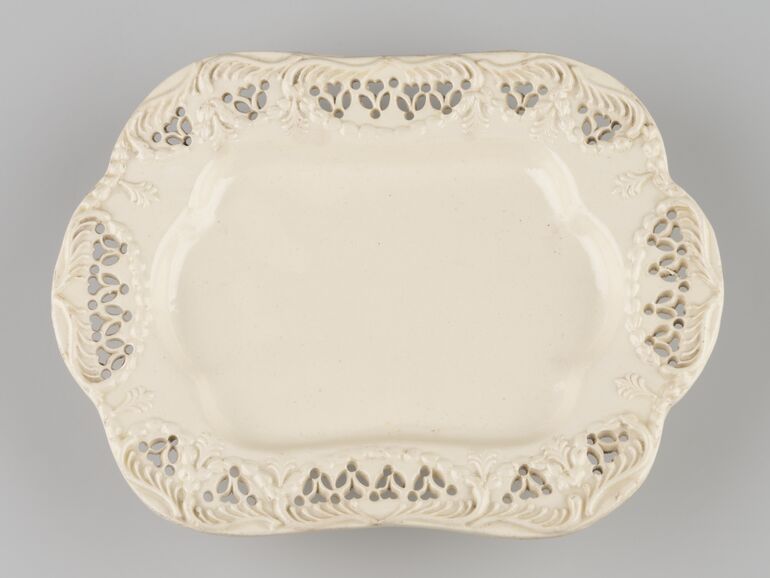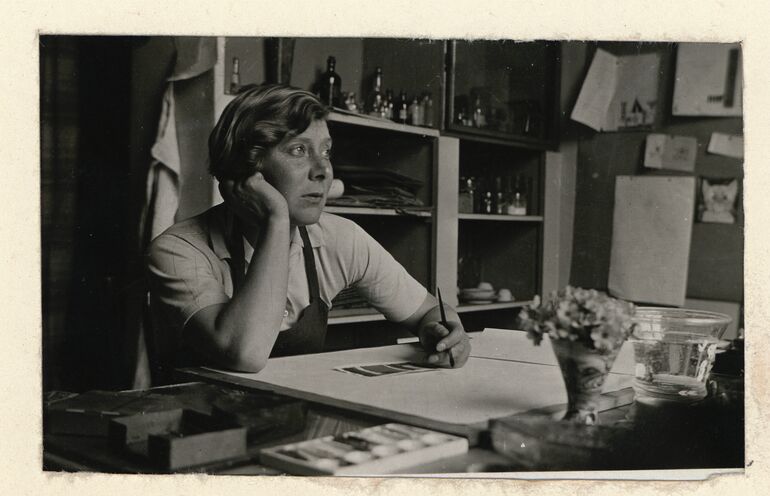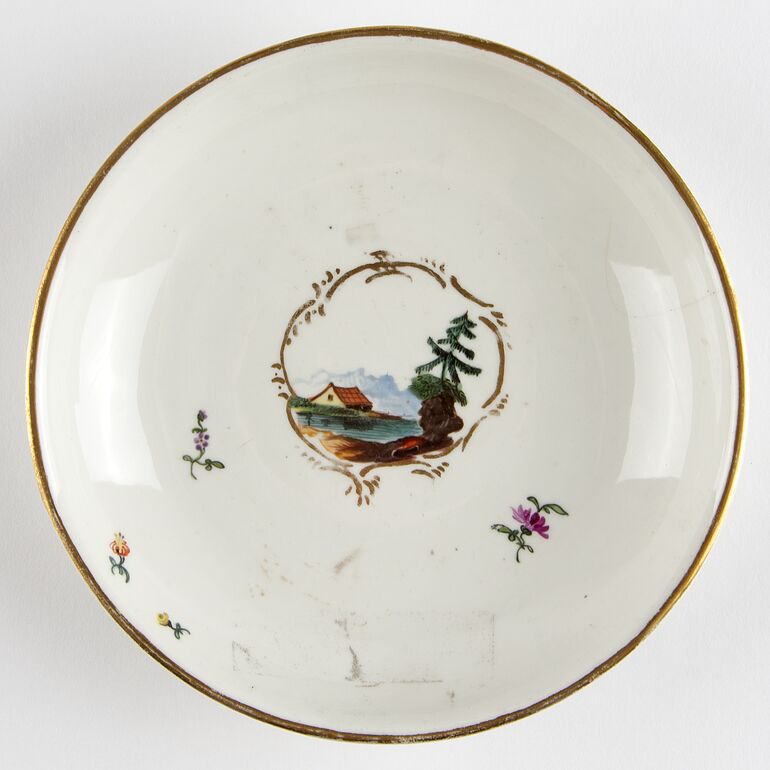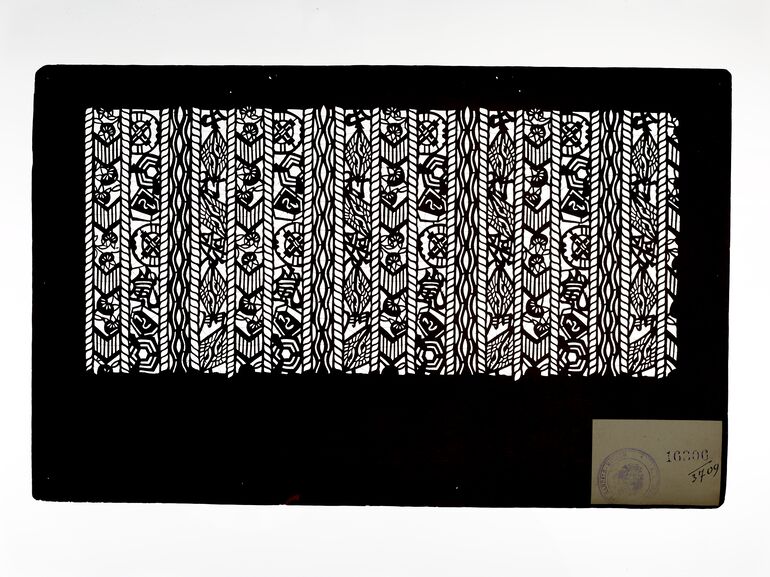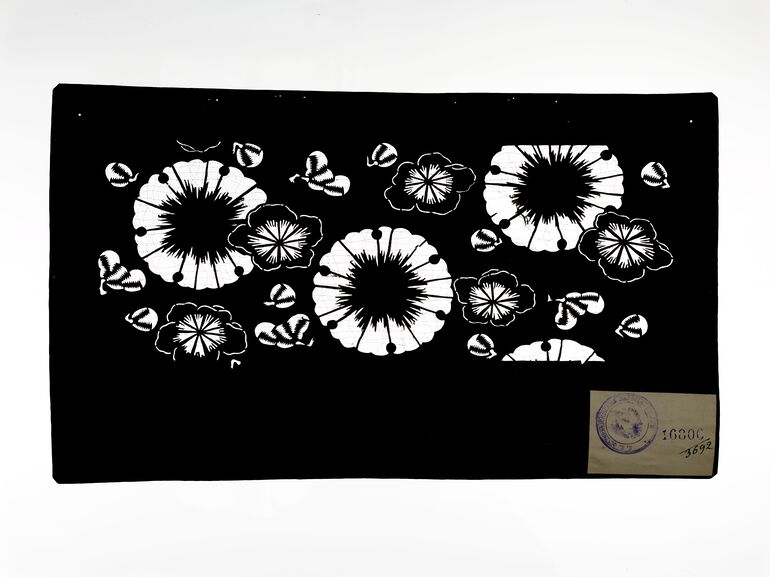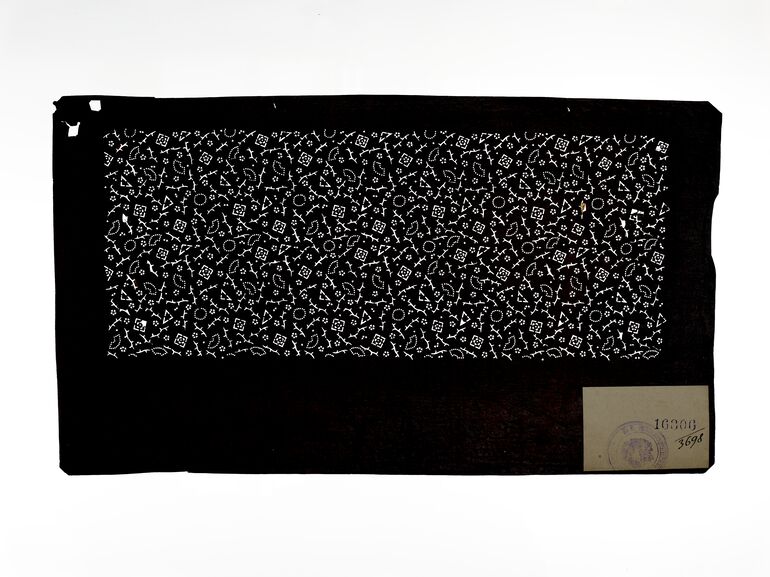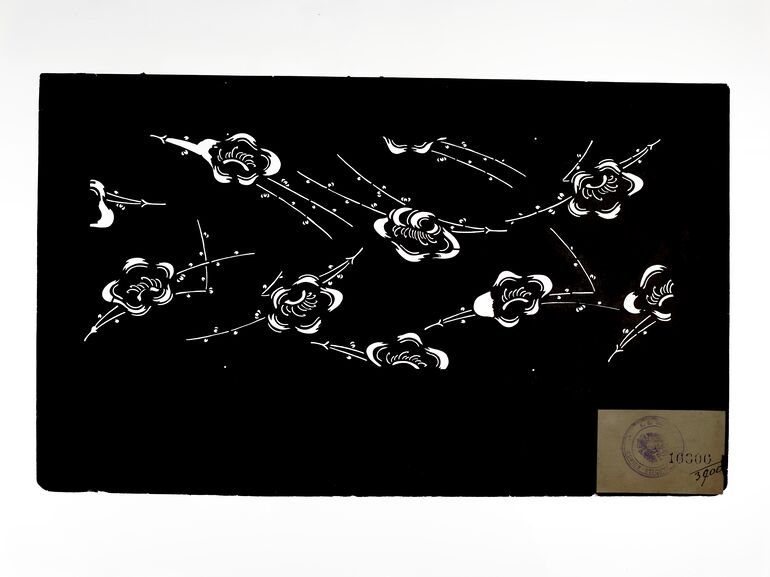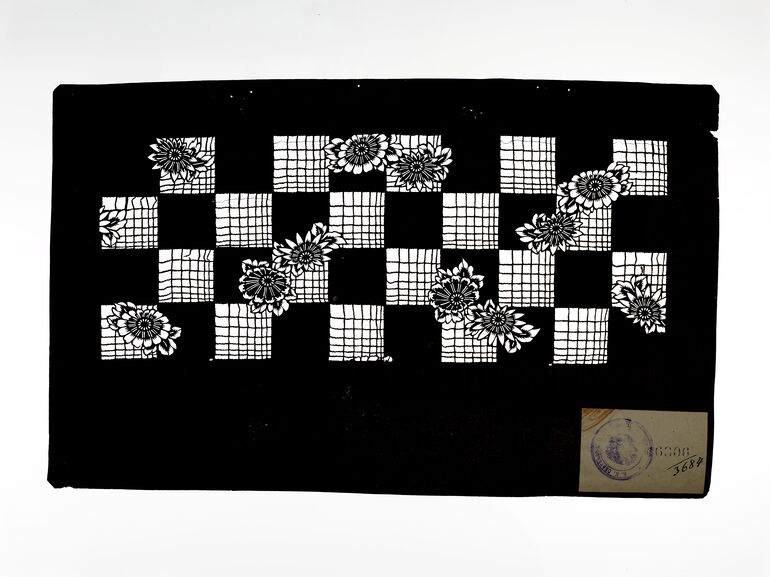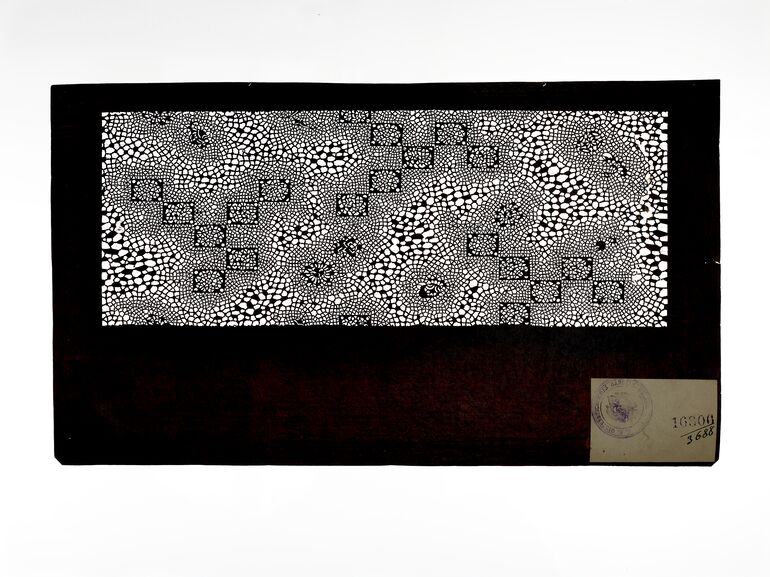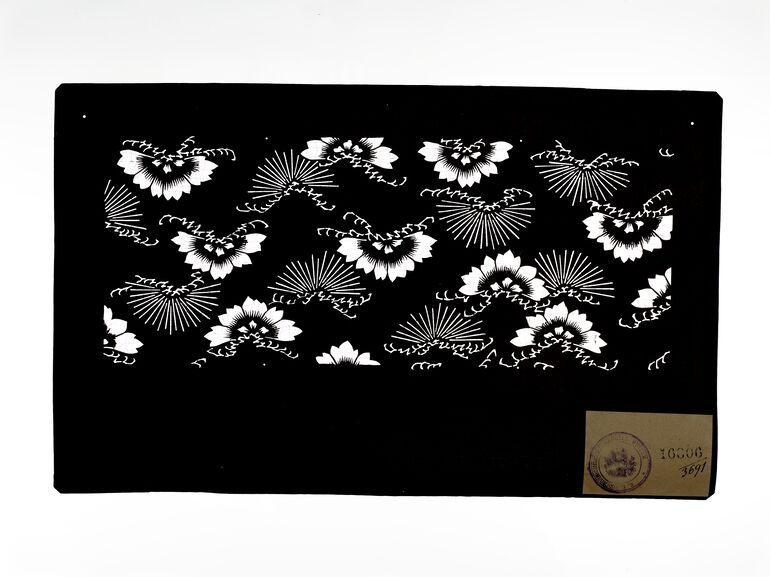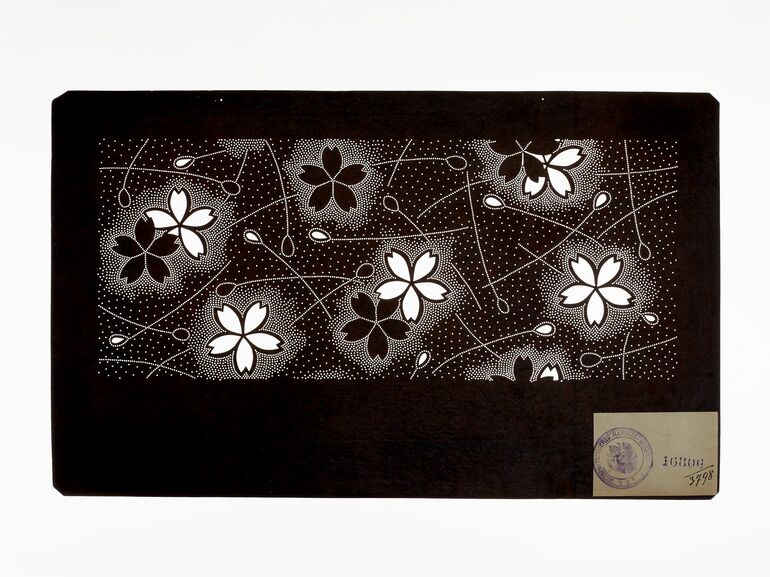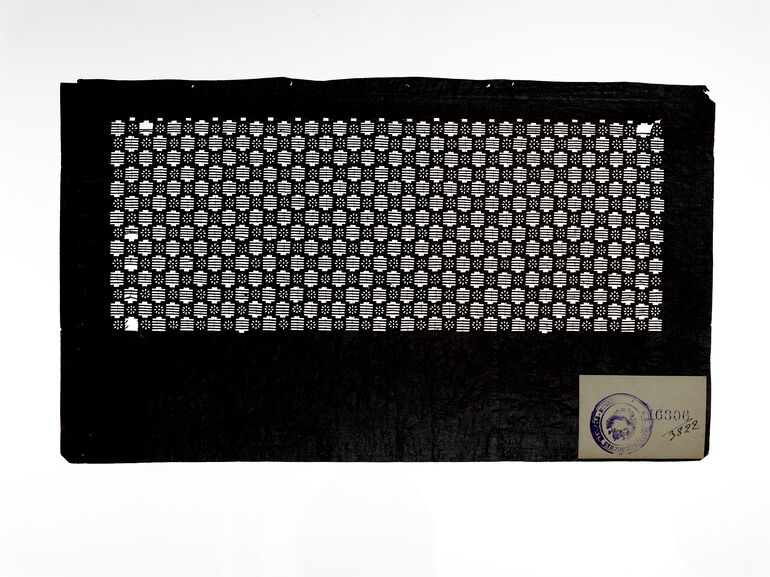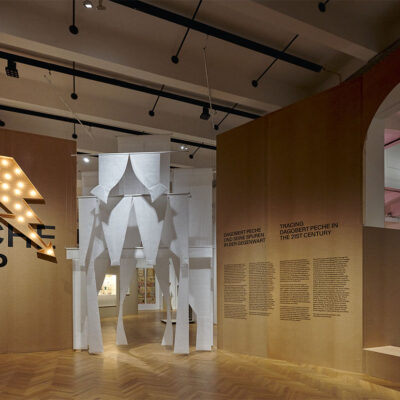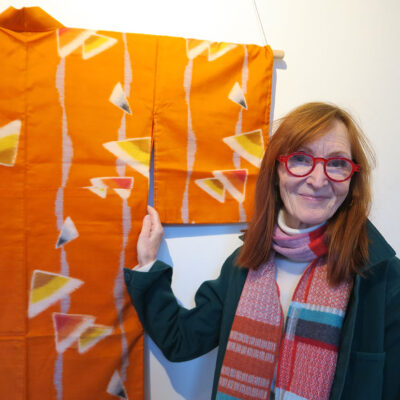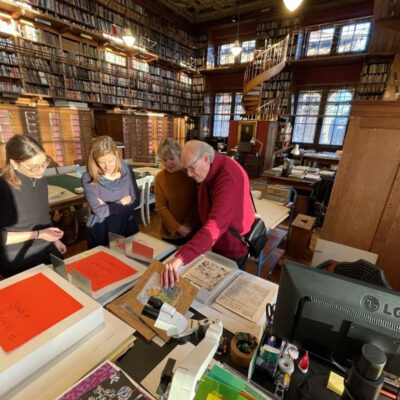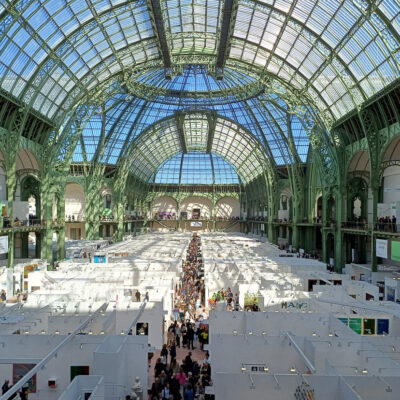1/2
Title
- Part of two-sheet pattern (nimaigata 二枚型). Surface pattern (waritsuke monyō 割付文様), plant pattern (shokubutsu monyō 植物文様): kikkō tsunagi 亀甲繋ぎ (connected tortoiseshells/hexagons) with chrysanthemums
Collection
Period | Style | School
Material | Technique
Measurements
- height: 25.4 cm
- width: 41 cm
- pattern - height: 16.5 cm
- pattern - width: 34.2 cm
Inventory number
- OR 3925-34-2
Acquisition
- assumption , 1907
Department
- Asia Collection
Associated Objects
- stencil (katagami 型紙), Part of two-sheet pattern (nimaigata 二枚型). Surface pattern (waritsuke monyō 割付文様), plant pattern (shokubutsu monyō 植物文様): kikkō tsunagi 亀甲繋ぎ (connected tortoiseshells/hexagons) with chrysanthemums
- stencil (katagami 型紙), Part of a set. Surface pattern (waritsuke monyō 割付文様), plant pattern (shokubutsu monyō 植物文様): kikkō tsunagi 亀甲繋ぎ (connected hexagons/tortoiseshells) with chrysanthemums
- stencil (katagami 型紙), Part of a set. Surface pattern (waritsuke monyō 割付文様), plant pattern (shokubutsu monyō 植物文様): kikkō tsunagi 亀甲繋ぎ (connected tortoiseshells/hexagons) with chrysanthemums
Description
-
"Dyed ground" (jizomari 地染), "main stencil" (omogata 主型). Motif with chain-like kikkō 亀甲 and chrysanthemums arranged like tiles.
Kikkō tsunagi 亀甲繋ぎ (connected tortoise shells/hexagons):
a geometric pattern of hexagons, that was already found in Sassanid art and is said to have come to Japan via China and Korea during the Nara period (710-794). Because of the resemblance to the turtle shell shield, it is called kikko 亀甲. It counts as an auspicious pattern (kisshō monyō 吉祥文様) and since the Heian period (794-1185, also 794-1192) also as a 'courtly pattern' (yūsoku monyō 有職文様).
-
stencil (katagami 型紙), Part of two-sheet pattern (nimaigata 二枚型). Surface pattern (waritsuke monyō 割付文様), plant pattern (shokubutsu monyō 植物文様): kikkō tsunagi 亀甲繋ぎ (connected tortoiseshells/hexagons) with chrysanthemums, Anonym, MAK Inv.nr. OR 3925-34-2
-
https://sammlung.mak.at/en/collect/part-of-two-sheet-pattern-nimaigata-二枚型-surface-pattern-waritsuke-monyo-割付文様-plant-pattern-shokubutsu-monyo-植物文_309815
Last update
- 13.04.2025

